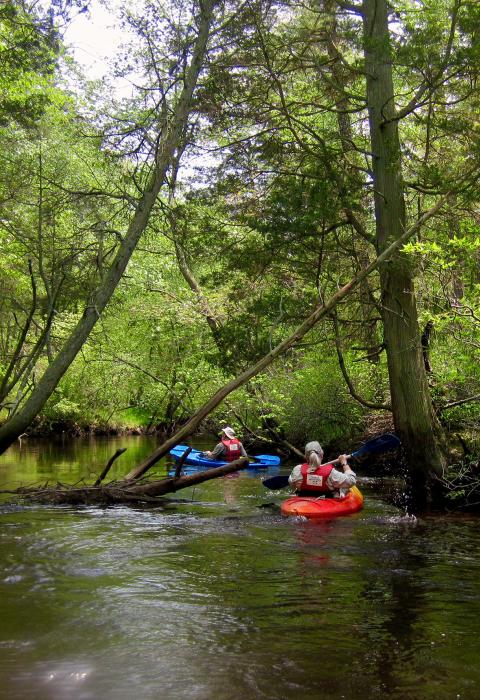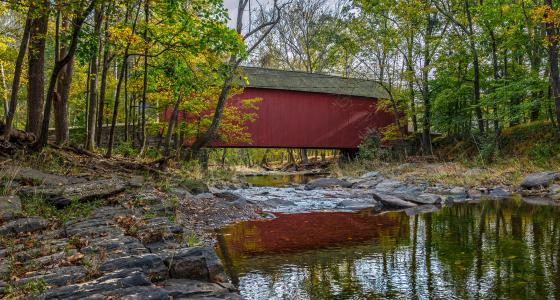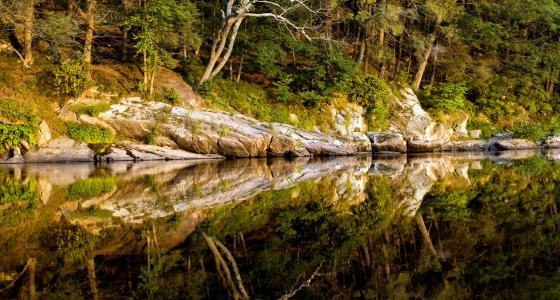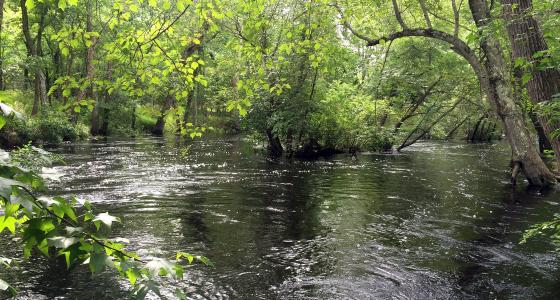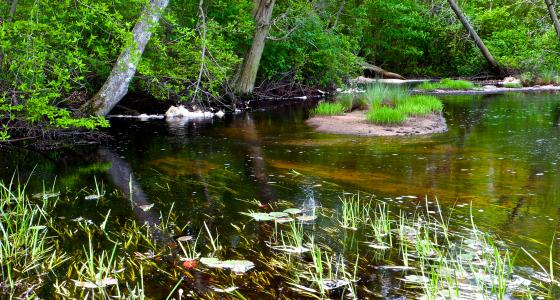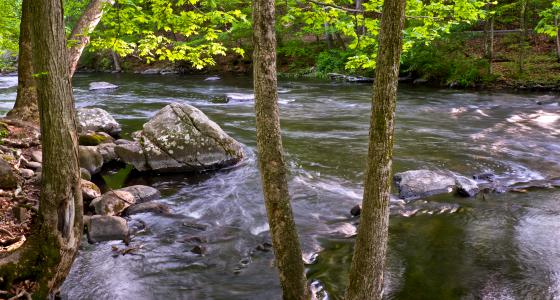One of the great things about the eastern states is that the rivers found there are flowing with history. For New Jersey, none is more famous or well known than the Delaware River, central to so much of the nation’s history and economic development. Historically, the Delaware and Raritan rivers have provided transportation of goods and people inland from the Atlantic Ocean and were once connected by the Delaware and Raritan Canal. Today, these rivers, and the streams that feed them, provide sport and recreation for many people.
One of the most distinctive areas of New Jersey is the Pine Barrens. Streams there are slow moving and shallow. One of the characteristic qualities of typical Pine Barrens streams is the unusual brown—tea-colored—water, the result of a high content of iron and by natural vegetative dyes, such as tannin. Under natural conditions these streams and rivers are quite acidic, with a pH of 5.0 or less. The nitrate-nitrogen concentration, which is an indicator of nutrients (fertilizers and septic systems), is very low under natural conditions, making the waters themselves relatively devoid of vegetation. These unusual streams account for most of the rivers designated in New Jersey.
New Jersey has approximately 6,450 miles of river, of which 262.9 miles are designated as wild and scenic—more than 4% of the state’s river miles.

